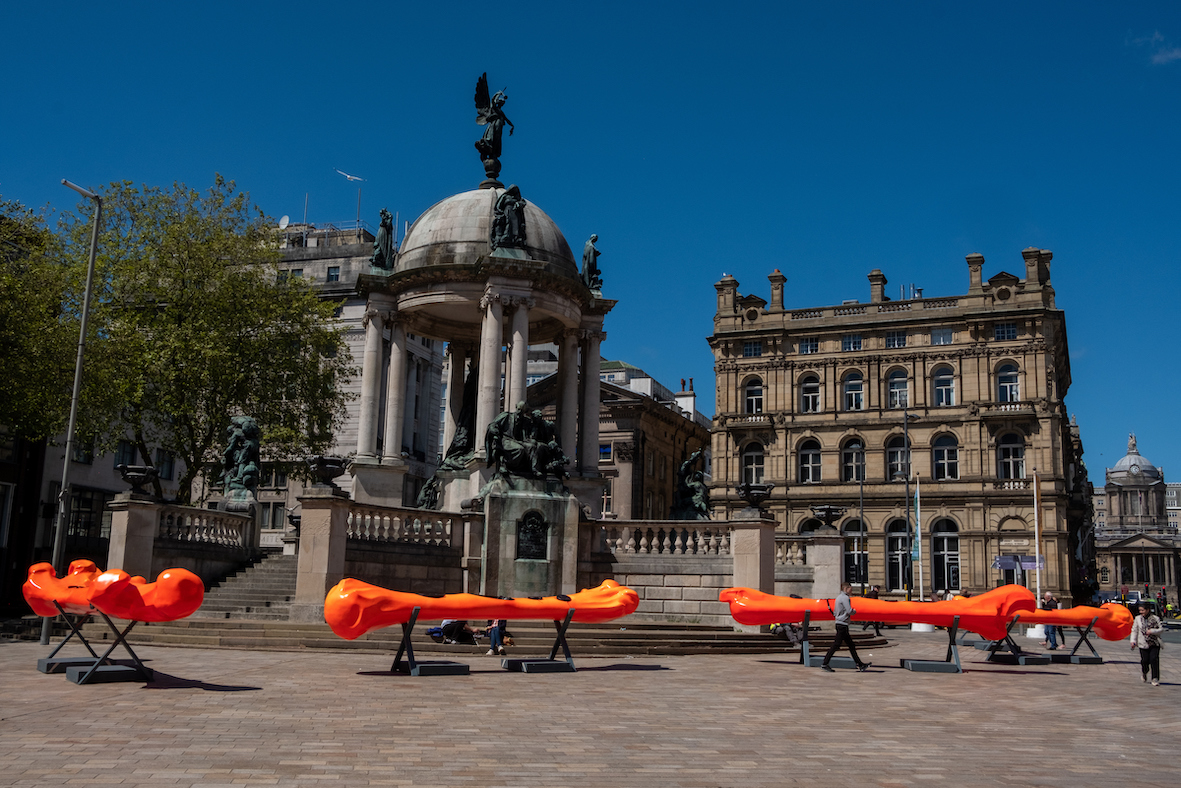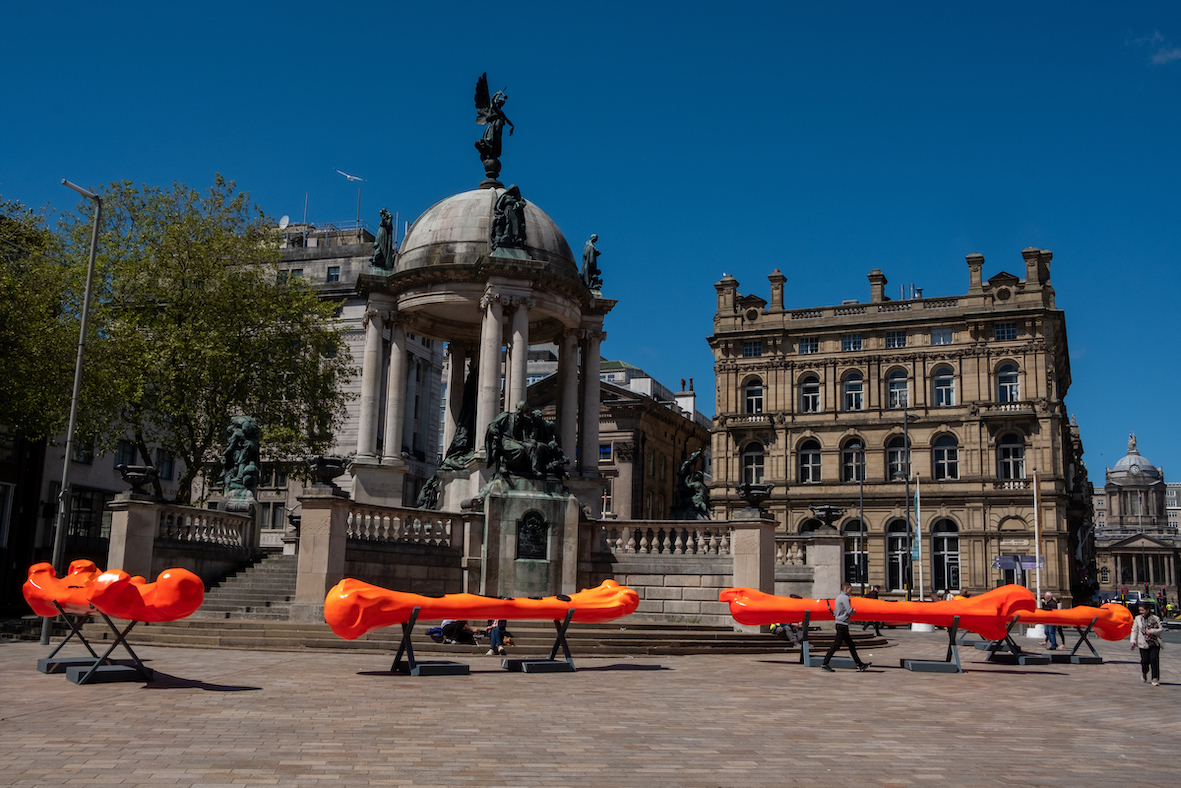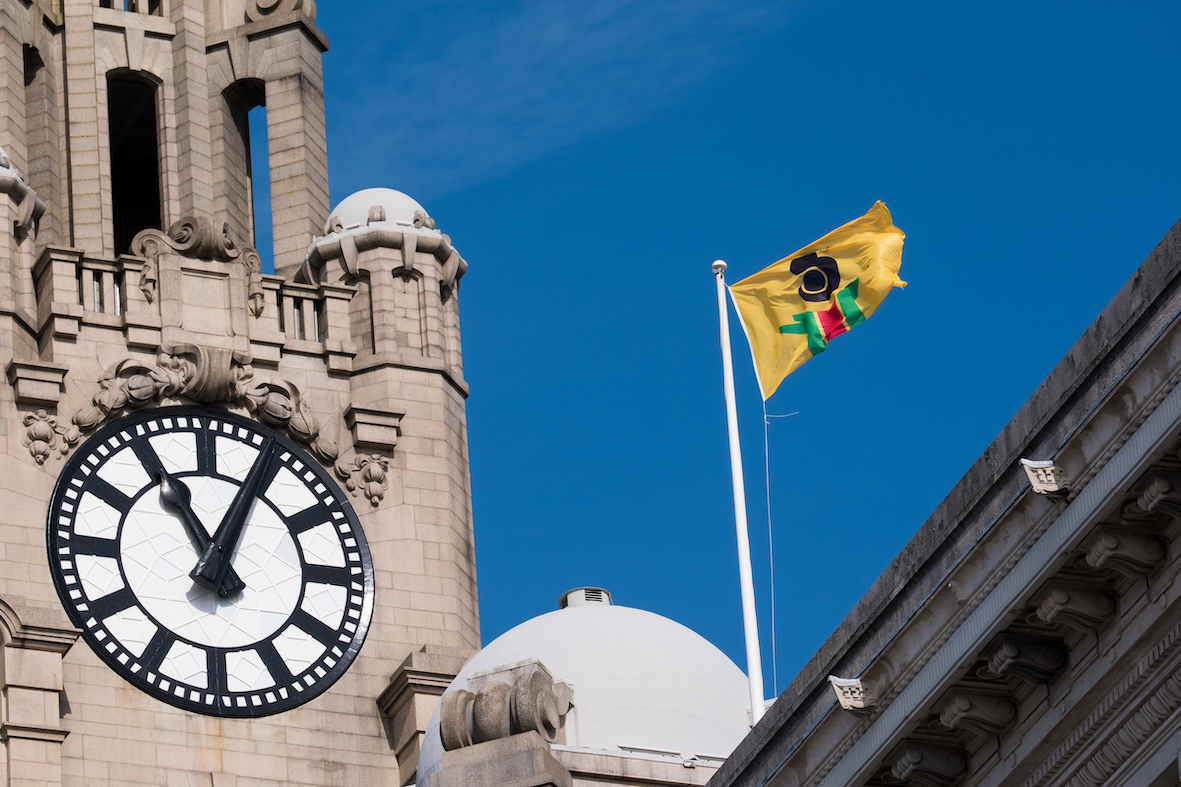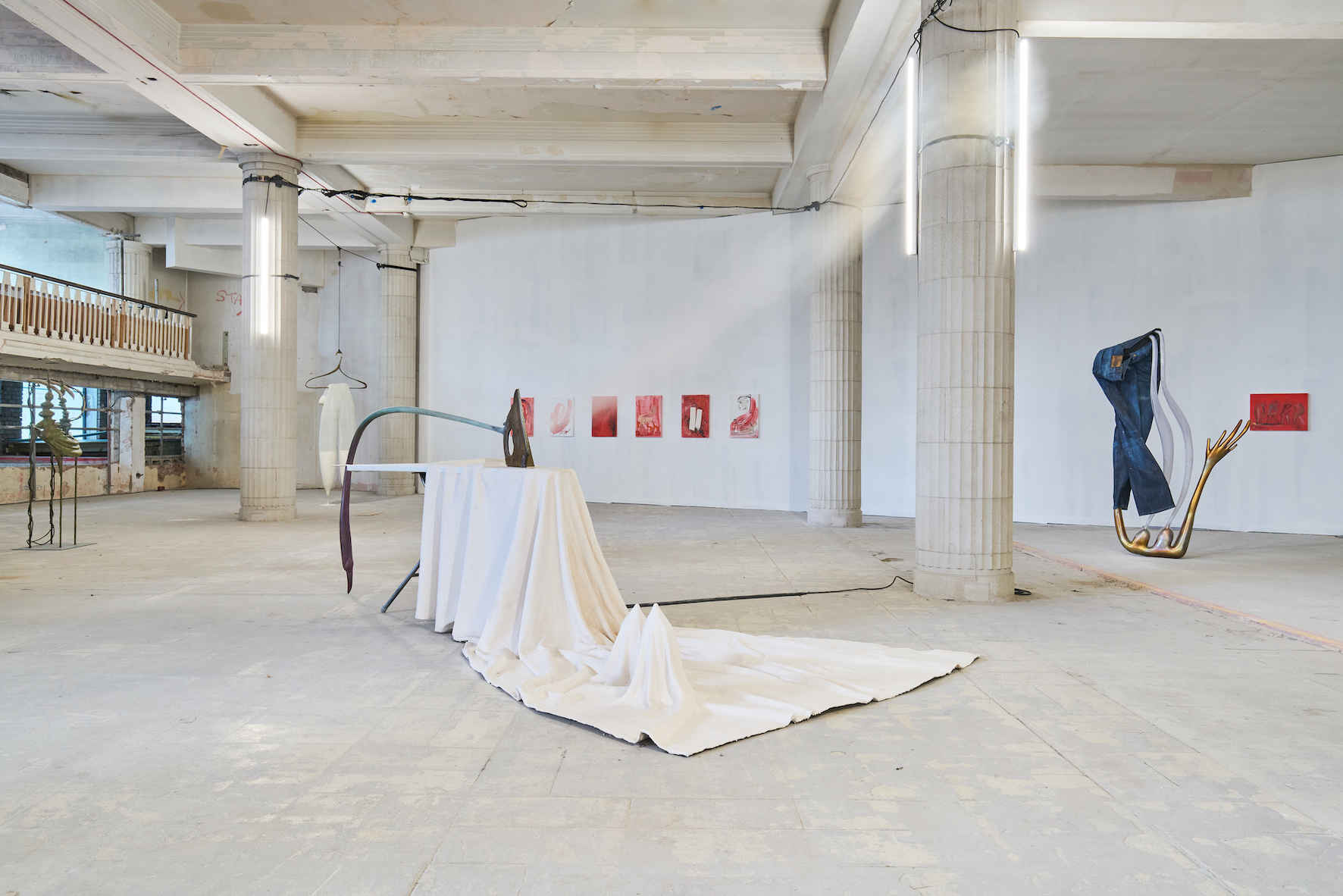Now Live
Porosity/Business District Trail
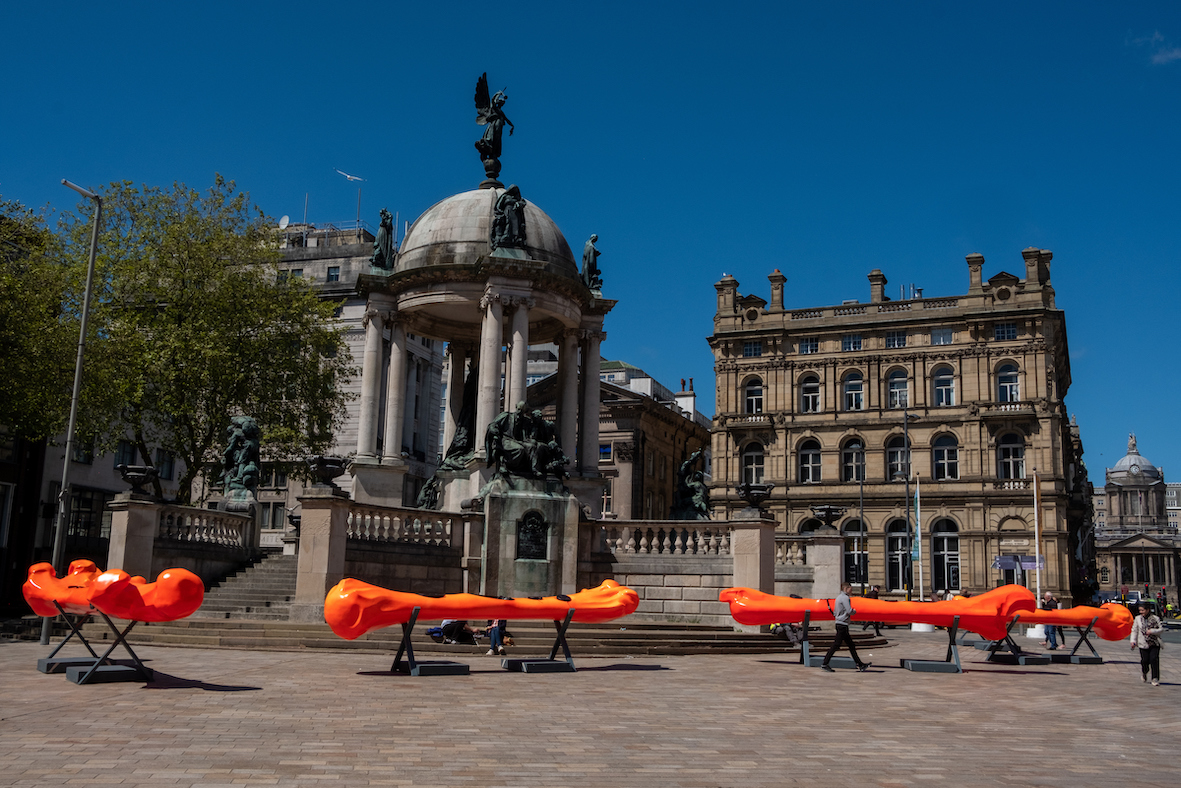
Porosity refers to the state of being porous – our pores are reactive and respond to the world around us. Our permeable skin acts like a port, allowing for passage and documenting our individual journey through absorbing and holding histories. To ignore the differences in skins is to ignore histories and structures of dominance, trade and labour. These venues all represent notions of porosity in some way, whether it is the Cotton Exchange building’s roots in the trading of cotton, notions of a journey and passage encapsulated at Exchange Flags, or the Central Library which is home to history, archive and community.
→ Estimated duration: 3 hours
→ All sites within 15 minutes circular walk of each other
Locations
Cotton Exchange
Sundown Series (2018 - ongoing) by Xaviera Simmons
Interested in how portraiture, language and landscape construct African-American history, Simmons juxtaposes portraiture, archival imagery and text against contemporary backdrops of the American landscape.
Booking is required and walk-ins are subject to capacity. Tickets available.
Derby Square (originally located at Exchange Flags)
Osteoclast (I do not know how I came to be on board this ship, this navel of my ark) (2021) by Teresa Solar
These sculptures draw a parallel between bones as porous matter – as hollowed structures, full of cavities, carriers of tissues, veins and cell communities – and vessels, vehicles of migration, transmitters of bodies and knowledge.
- Public artwork.
Central Library
Wingspan of the Captive (2021) by Yael Davids
Davids’ work looks at migratory birds, captured in the book The Birds of America by John James Audubon, reflecting a key issue around forced displacement and movement of humans across borders.
- No booking required. Walk-ins welcome.
St John’s Gardens
Pan African Flag for the Relic Travellers’ Alliance (2017 - ongoing) by Larry Achiampong
The porosity of skin and other materials like the textile flags is testament to the changes we all experience in our individual journeys, weathered, tarnished and ever changing.
- Public artwork.
- Public Work
- Venues
- Bookings

